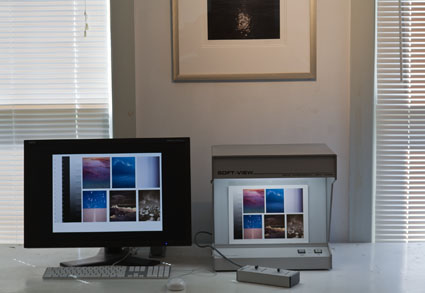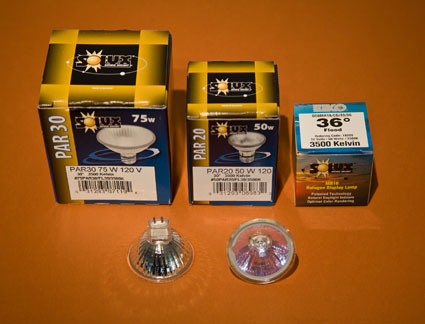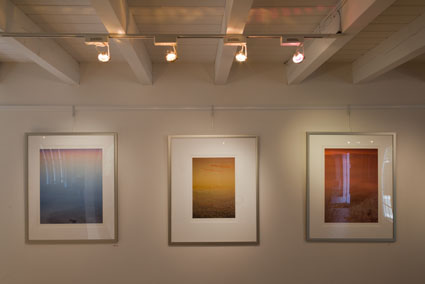21 Books On Climate Change Recommended By Climate Scientists

Looking for authoritative information on climate change?
Find the books climate scientists recommend here.
Find more Recommended Reading here.

Looking for authoritative information on climate change?
Find the books climate scientists recommend here.
Find more Recommended Reading here.

The world is a complex and fast-moving place and we make it more complex and faster every day. The efficient coping mechanisms we have developed to filter and select information to help us to survive and thrive amid an enormous amount of stimulation often get in the way of fully experiencing our environment. Spend some time becoming more aware of the miracles that surround you.
Try this meditation.
1 Sit, stand or move slowly. Do so in a way that you can be undistracted so that you can direct your full attention to your environment.
2 Shift your attention to your vision. Look around you – side-to-side, behind and before you, up and down.
3 Shift your attention to your hearing. Listen to both quiet and loud and near and far sounds.
4 Shift your attention to your sense of smell. Fully experience both pleasant and unpleasant smells.
5 Shift your attention to your sense of touch. Explore the temperature, the air, the ground, the things around you, etc.
6 Become aware of more than one sensation at a time, working to simultaneously integrate them all without prioritizing one over the other.
Simply observe your experiences of your environment. Don’t compare, contrast, evaluate or judge your experiences. Don’t let identifying the things you perceive with labels limit your impressions. If thoughts come to mind, note them and gently let them go. Return your consciousness to your direct experience.
It’s Earth Day 2012!
Find out more about Earth Day here.
The first Earth Day on April 22, 1970, activated 20 million Americans from all walks of life and is widely credited with launching the modern environmental movement. The passage of the landmark Clean Air Act, Clean Water Act, Endangered Species Act and many other groundbreaking environmental laws soon followed. Growing out of the first Earth Day, Earth Day Network (EDN) works with over 22,000 partners in 192 countries to broaden, diversify and mobilize the environmental movement. More than 1 billion people now participate in Earth Day activities each year, making it the largest civic observance in the world.
But Earth Day Network does not stop there.
Read More
One Day on Earth – Motion Picture Trailer from One Day On Earth on Vimeo.
“On November 11th, 11.11.11, across the planet, documentary filmmakers, students, and other inspired citizens will record the human experience over a 24-hour period and contribute their voice to the second annual global day of media creation called One Day on Earth. Together, we will create a shared archive and a film.
Founded in 2008, One Day on Earth’s first media creation event occurred on 10.10.10. The collaboration was the first ever simultaneous filming event occuring in every country of the world. It created a unique geo-tagged video archive as well as an upcoming feature film.
Together, we are showcasing the amazing diversity, conflict, tragedy, and triumph that occurs in one day. We invite you to join our international community of thousands of filmmakers, hundreds of schools, and dozens of non-profits, and contribute to this unique global mosaic. One Day on Earth is a community that not only watches, but participates.”
What will you contribute today?
Visit One Day On Earth here.

One critical aspect of color management has nothing to do with either hardware or software. It’s the environment you work in. Control your environment and you’ll control the color you see. Desktop, walls, decorations, fashion, viewing light, secondary light sources, ambient light – it all matters.
Keep It Neutral
Color influences color. This is sometime physical, when filtered or reflected color alters the appearance of another. This is always perceptual, when our eyes adapt to the presence of multiple colors. That’s right. Surround one color with another color and you’ll experience the color differently. You can’t measure this change in the physical world because the change takes place inside your eye/brain. Simultaneous contrast is a perceptual adaptation that you can’t turn off, but you can be aware that it’s happening, understand how it’s influencing you, and minimize it’s effects.
How? Surround yourself with neutral colors; they influence our experience of other colors least. Neutral colors produce the least contamination and the least adaptation. And, medium gray values produce the least brightness compensations of all neutral colors.
You may be tempted to make the appearance of your computer desktop colorful and lively. That’s fine for many non-color-critical tasks. However, when you’re adjusting color, make your desktop neutral. You won’t be able to see the color you’re adjusting accurately unless you do. If you don’t want to change your desktop use Full Screen mode, to hide the desktop and surround your image with a neutral color. (One downside to this is you’ll only be able to view one image at a time.)
Walls and decorations of any significant area should be neutral in appearance too. Make walls and decorations neutral. For the purposes of controlling your environment, any neutral color is better than a saturated color. You could opt for white, gray, or black. Don’t opt for designer whites, grays, or blacks, which contain trace amounts of hue and saturation that can still influence your perception enough to be significant. Choose neutrals. (If you’ve got a favorite image (poster, photograph, painting, etc) that’s colorful, position it out of your field of vision while you’re adjusting color.)
Don’t forget fashion. Wear neutral colors. If you wear bright colors, they’ll influence your perception too, especially if light reflects off of them and onto your surroundings or images.
Light It Well
The most important thing to control in your environment is light.
After all, light is what produces your sensation of color.
Viewing light, secondary light sources, ambient light
It stands to reason, for viewing color accurately, you want white light not filtered or colored light. (Don’t wear sunglasses or tinted glasses when adjusting color.) But what many people don’t consider is that not all white lights are created equally.
You’ll want to consider the amount of light – measured lux. It’s better to have too much light than too little light; colors will appear dull if you don’t use enough light; just don’t produce glare or make viewers squint. A CRI of 90 or higher is recommended.
Next, consider the color temperature of light – measured in Kelvin degrees. While 5000K is the industry standard (most viewing boxes and printer profiles are built for the 5000 K standard), in real world situations very few people view printed color under 5000K light. More typically, prints are viewed in galleries and museums in some form of halogen (3300K – 3800K) or in homes under tungsten (2800K) with a mix of daylight which varies with time of day, weather, and season. Viewing light for the end user is often highly variable. So, what do you do? Make prints for a specific lighting condition if practical. Otherwise, standardize on a viewing light temperature that can be least adversely affected in as many real world situations as possible. More people prefer the taste of 3600K than any other light temperature.
Finally, consider a light’s spectral distribution – smooth or spiky when graphed. White light can be mixed with different combinations of colored lights. This rarely affects the appearance of neutral colors, but it may have a significant effect on saturated colors. Light sources that contain only a few spectral frequencies (spiky or limited) will increase the apparent saturation of the colors they contain and decrease the apparent saturation of the colors they don’t. Light sources that contain all spectral frequencies (smooth or full) will render all colors without bias and won’t produce relative saturation distortions. Full spectrum light (sunshine, tungsten, some halogen) makes colors appear clearer and more saturated. (See my free ebook review on Solux lighting at www.johnpaulcaponigro.com.)


Secondary light sources should also be considered. Avoid backlighting; don’t position your monitor or proofs/prints with bright light sources behind them. Eliminate reflections; use blinds for windows and reposition lights that reflect off monitors. Reduce glare and flare as much as possible. New colorimeters (like Ax-Rite’s i1Display Pro and ColorMunki Display) compensate for these factors during monitor calibration and constantly measure and adapt to changes in these factors over time. Make your viewing experience as easy as possible. If you’re serious about color, you’ll plan to look a lot.
With a few careful choices you can make sure your environment supports your efforts to see and adjust color precisely every day. It’s time well spent. Without this attention to detail, even the most sophisticated color-management systems may be compromised. With this attention to detail, you can rest assured that you’ve done everything physically possible to control color. In a controlled environment, your color will truly shine.
Read more on Color Management here.
Learn more in my digital photography and digital printing workshops.

What can you do to safeguard our children’s future?
Here are three things.
Install low energy light bulbs and turn them out when you’re not using them.
Sign the Earth Day petition for a comprehensive US climate bill.
Join the Climate Rally in Washington DC on April 25th.
Find more ideas with these links. (see bottom of page)
To benefit from Al Gore’s talks you don’t have to agree with him. A majority of recommended actions benefit the you and the economy through efficiency. Simply listen to his 15 points on How You Can Contribute. You can make a difference. It’s easy! Start now!
(If you’re short on time jump to 06:00 , past his self-depracating humor.)
Find more recommended TED viewing here.
Do you have other TED recommendations? Comment here!
When social concerns get mixed with commercial messages you know a sea change is in process.
What does lighting have to do with energy efficiency? A great deal for both big business and individuals.
Support companies who take public stances, act, and deliver real solutions.